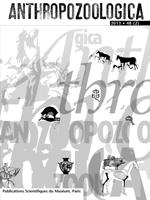Across the Caribbean, the widespread presence of canine remains at archaeological sites from the Salado id period raises questions about the role of “man's best friend.” Dog (Canis familiaris) remains have been found located in both refuse middens and burials adjacent to human graves in a number of sites in the French Antilles and Barbuda, West Indies. This paper will critically examine dog remains and discuss the varied duality of the dog's role in the Saladoid world: from food source to lifelong companion. The importance of dogs within Amerindian sites from Saint Martin, the Guadeloupe archipelago, Martinique and Barbuda will be explored from a zooarchaeological perspective, concluding with a critical discussion of changes in cultural patterns, as seen through the decline in dog remains during the Troumassoid and Suazoid period at the sites in the French Antilles.
How to translate text using browser tools
1 December 2013
Dog burials associated with Human burials in the West Indies during the early pre-Columbian Ceramic Age (500 BC-600 AD)
Sandrine Grouard,
Sophia Perdikaris,
Karyne Debue
ACCESS THE FULL ARTICLE
It is not available for individual sale.
This article is only available to subscribers.
It is not available for individual sale.
It is not available for individual sale.

Anthropozoologica
Vol. 48 • No. 2
December 2013
Vol. 48 • No. 2
December 2013
clog's burial
Lesser Antilles
morphologie
morphology
Petites Antilles
précolombien
Pre-Columbian




